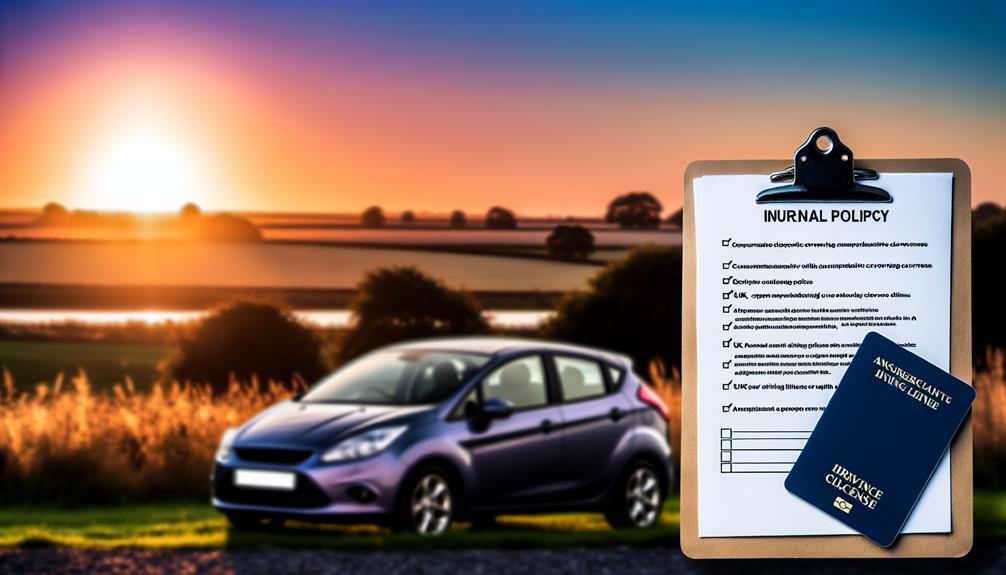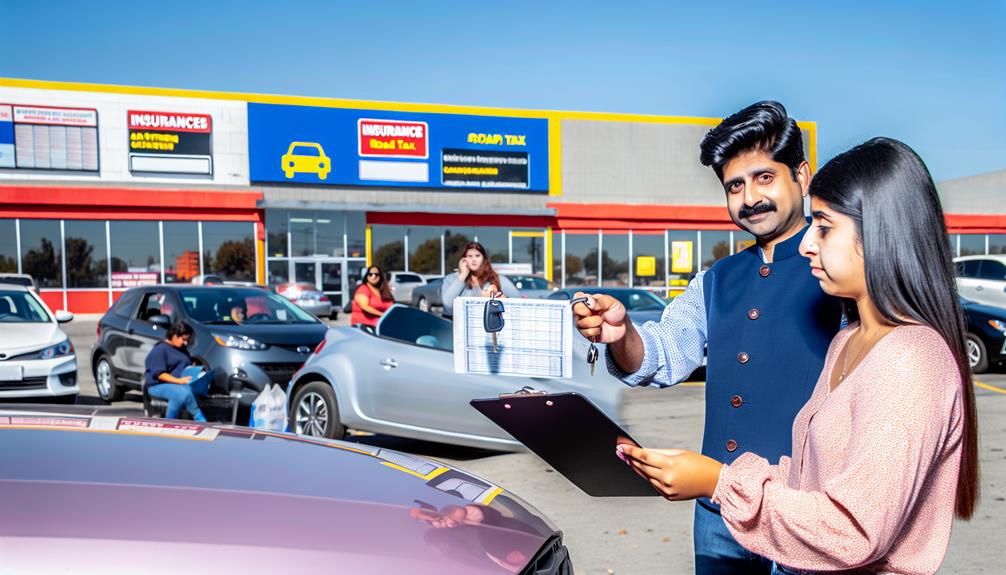As you prepare for your UK driving test, ensuring that you choose the right car for the occasion is paramount. Have you considered the specific insurance requirements that must be met for the vehicle you plan to hire?
Your choice of car could make all the difference in your test experience, so it’s essential to pay attention to details that might impact your performance on the big day.
From vehicle specifications to additional considerations, each aspect plays an important role in your overall readiness.
Key Takeaways
- Ensure proper insurance coverage to meet examiners’ requirements.
- Select a compact car with necessary features for test success.
- Choose an instructor aligned with your learning style for effective preparation.
- Secure test booking and car hire details in advance for a smooth experience.
Insurance Requirements

Before hiring a car for your UK driving test, you must make sure that the insurance requirements are met. When selecting a vehicle, it’s important to take into account the coverage options available and the policy limits. Most driving test examiners will require the car to be properly insured, so checking this beforehand will save you from any last-minute stress.
Coverage options refer to the types of incidents that the insurance policy will cover. It’s vital to choose a full insurance plan that includes coverage for damages to the vehicle, third-party liability, and personal injury. Understanding the coverage options will ensure that you’re adequately protected during the driving test.
Policy limits indicate the maximum amount that the insurance company will pay out for a claim. Make sure the policy limits are sufficient to cover any potential damages or injuries that may occur during the driving test. By being aware of the coverage options and policy limits, you can confidently proceed with hiring a car for your UK driving test.
Vehicle Specifications
When contemplating vehicle specifications for your UK driving test, it’s important to make sure that the car meets the required standards set by the examiners. To make certain a smooth test experience, here are some key factors to take into account:
- Car Size: Opt for a vehicle that’s easy to maneuver and park. A compact car can be advantageous as it offers better visibility and makes it simpler to navigate through tight spaces during the test.
- Engine Power: Choose a car with an engine that provides adequate power for different road conditions. A vehicle with a responsive engine can help you accelerate smoothly and maintain appropriate speeds during the test.
- Additional Features: Look for a car equipped with features such as power steering, adjustable mirrors, and good visibility through the windows. These features can enhance your driving comfort and overall test performance.
Selecting a car with suitable size, engine power, and additional features can contribute significantly to your confidence and success during the UK driving test.
Approved Driving Instructors

Considering the importance of proper guidance and instruction during your UK driving test, understanding the role of Approved Driving Instructors is fundamental for your success on the road. When selecting an instructor, it’s critical to inquire about their qualifications. Approved Driving Instructors (ADIs) in the UK must pass rigorous tests to make sure they meet the necessary standards to teach driving effectively. These qualifications guarantee that you’re receiving instruction from a professional who’s equipped with the knowledge and skills to guide you through the complexities of driving safely.
Additionally, the teaching style of an instructor plays a significant role in your learning process. Different instructors may have varying approaches, so finding one whose teaching style aligns with your learning preferences is vital. Some instructors may focus more on practical skills, while others may emphasize theoretical knowledge. By discussing teaching methods and expectations upfront, you can guarantee a productive learning experience that suits your needs and helps you prepare thoroughly for your driving test.
Booking Procedures
To initiate the process of booking your UK driving test, you’ll need to navigate through the online booking system provided by the Driver and Vehicle Standards Agency (DVSA). This system allows you to select the date, time, and location for your test, ensuring a smooth booking experience.
- Online Platforms: Utilize the DVSA’s online platform to book your driving test efficiently. This platform provides a user-friendly interface to guide you through the booking process step by step.
- Rental Agreements: Before confirming your booking, make sure you have a clear understanding of the rental agreement with the car hire company. Check for any additional fees, insurance coverage, and requirements specific to taking a driving test.
- Confirmation Process: After completing the booking on the online platform and finalizing the rental agreement, make sure to receive confirmation of both the driving test appointment and the car hire details. Keep these documents safe for reference on the day of your test.
Additional Considerations

As you prepare for your UK driving test, it’s important to carefully review any specific requirements or restrictions that may apply when hiring a car for the test. When considering additional factors, your driving experience plays a vital role. Make sure that the vehicle you choose aligns with your familiarity and comfort level with its features, such as manual or automatic transmission, as this can impact your performance on the test day.
Test day preparation is key. Check that the car you hire has valid insurance, tax, and registration documents. Familiarize yourself with the car’s controls and adjust the mirrors and seats to suit your position before starting the test. Make sure the vehicle is roadworthy with functioning lights, brakes, and tires to avoid any surprises during the examination.

